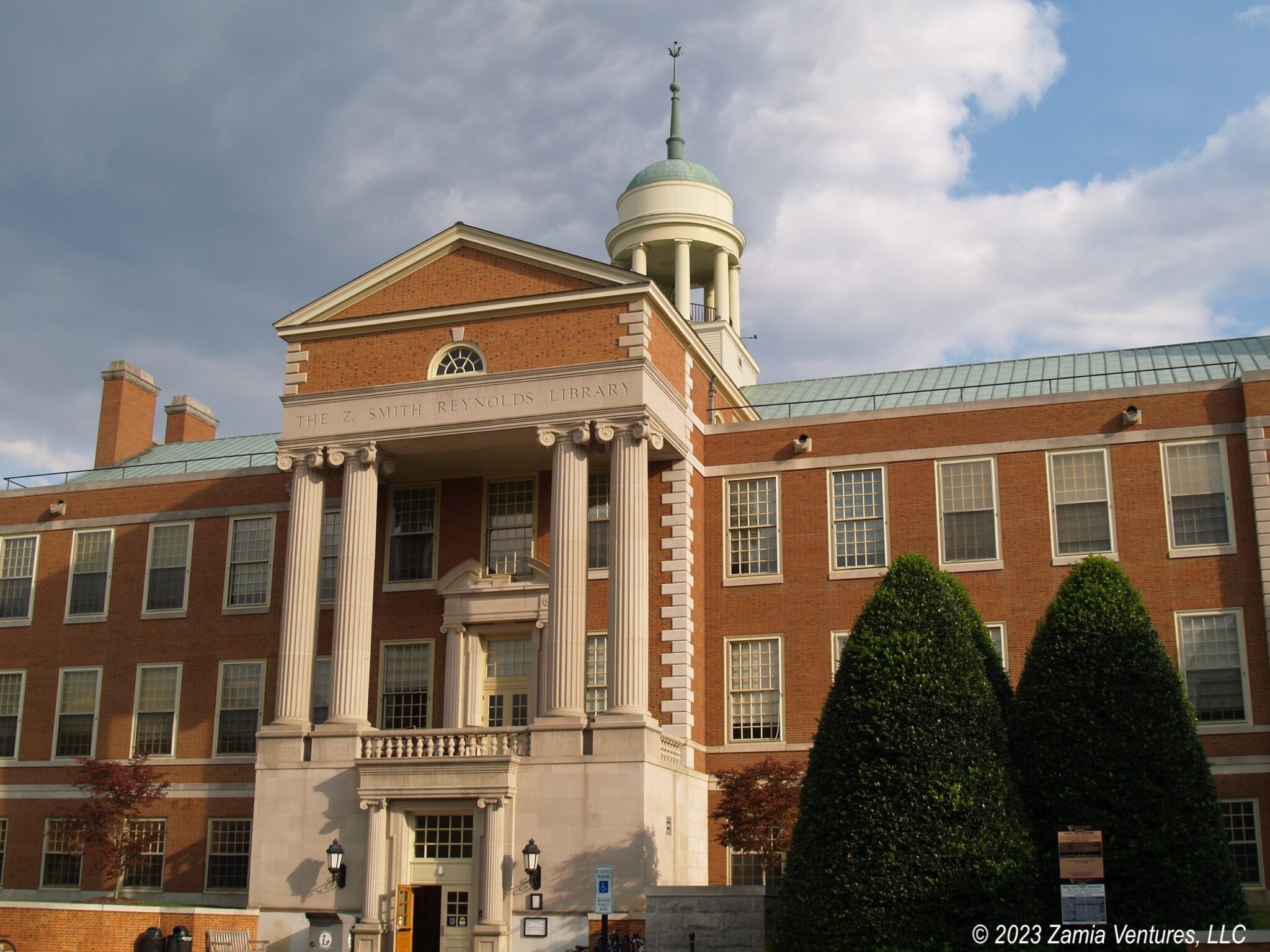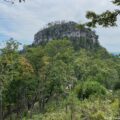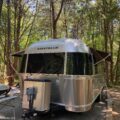The heyday of cigarette and underwear companies as employers in Winston-Salem was during the middle years of the 20th century. Eventually automation, the lower cost of overseas labor, and general market changes led to much of the manufacturing exiting the area, leaving Winston-Salem relatively bereft of major employers. The 1980s were not a great time for the city, but the seeds had already been planted for the city’s latest renaissance in the form of several significant institutions of higher learning. In the modern knowledge economy, the innovation and entrepreneurship generated by universities can foster prosperity when traditional industries falter.
Oldies But Goodies
I’ve already written about how the Moravian commitment to higher education led to the establishment of Salem Academy and College, which has educated girls and women since 1772. Today Salem College has about 500 students and is focusing its traditional liberal arts curriculum on preparing women for leadership in health-related fields.
Another important member of the local college scene is Winston-Salem State University, a public HBCU founded in 1892 as Slater Industrial Academy. In 1925 the NC General Assembly recognized the school’s post-high-school curriculum, changed the name to Winston-Salem Teachers College, and thereby authorized it to be the first black institution in the nation to grant degrees for teaching the elementary grades. The school soon diversified into nursing and other fields and became part of the UNC system in 1972. WSSU has over 5,000 undergraduate and graduate students, and is regularly hailed as one of the nation’s top HBCUs. Between its low tuition and significant enrollment of under-resourced students, WSSU is a notable creator of social mobility. We really enjoyed strolling around the WSSU campus last week despite the closure of their art gallery.
Newer Arrivals
The twentieth century brought several additional players onto the college scene in Winston-Salem. Through a surprising series of coincidences, in 1941 the two-year medical school of tiny Wake Forest College moved from its hometown near Raleigh, NC to Winston-Salem to team up with the existing North Carolina Baptist Hospital. The expansion and relocation of the medical school was funded by the estate of Bowman Gray, former CEO of R.J. Reynolds Tobacco and former occupant of the Graylyn Estate I mentioned in my last post. The surviving family of R.J. Reynolds himself soon started offering their own financial incentives for the rest of the college to move to Winston, and in 1956 Wake Forest opened the doors of its brand new college campus, built on the “back 40” of the Reynolds family estate. Today Atrium Health – Wake Forest Baptist and Wake Forest University directly employ over 20,000 people in Winston-Salem and together form the backbone of the local economy. Go Deacs!
The city is also home to the University of North Carolina School of the Arts, a conservatory for high school, college, and post-graduate education established in 1963. With about 1,100 students focused on fields such as music, dance, film, drama, and design and production, the local calendar is simply packed with performances by students and visiting artists. Most UNCSA performances take place at its downtown Stevens Center, a historic theater originally built to show silent films. Today the Stevens Center anchors the Fourth Street dining and entertainment corridor by serving as the primary performance space for UNCSA as well as the Winston-Salem Symphony, Piedmont Opera, and National Black Theatre Festival. I would be remiss if I didn’t also mention Forsyth Technical Community College, another well-regarded public institution which serves 11,000+ students in the region.
The presence of so many students, faculty, and other university-affiliated people in this town really creates a sense of vitality and possibility. In the interest of full disclosure, I should mention that I attended college at Wake Forest and am an engaged alumna, having served on several different boards and councils over the years. This obviously influenced our decision to spend a month in Winston-Salem this summer, and we’ve had a truly astonishing number (for us) of coffee, lunch, and dinner dates with WF people. I’ll talk more about the social scene in my next post, but for now I’ll share some details on a few Wake-related attractions we visited this week.
Salem Band Concert
A Wake Forest friend plays in the historic Salem Band, a community musical ensemble with roots in the 18th century. When we realized that the summer concerts are held in Salem Square, a short walk from our rental, we made plans to attend the August performance. The free concert series is held outdoors and attendees — a group including people of all ages from retirees to families with young kids — set up their own lawn chairs and blankets around the green. This month the ~50-piece ensemble of woodwind, brass, and percussion instruments put on a fun program of all-American tunes ranging from New Orleans jazz to Burt Bacharach standards to Clifton Williams symphonic pieces. Sitting in the middle of a well-preserved historic district, listening to the sounds of the band float across the green as night fell, and watching as fireflies started winking in the dusk beneath the tree canopy, I think I can be forgiven for briefly wondering if we had entered a time warp to the 19th century.

Lam Museum of Anthropology
Tucked away in a quiet corner of the Wake Forest campus is the small but interesting Lam Museum of Anthropology, which offers a unique hands-on experience for the university’s anthropology students. Unlike some of the world-class museums we’ve seen at other universities (such as the Chazen Museum of Art we visited last summer at UW-Madison), the exhibits at the Lam are primarily conceived and executed by students. One exhibit used physical artifacts and interview/survey data to communicate the lived experience of members of the Dalit (untouchable) caste in Nepal. Another exhibit was focused on tea traditions, and used artifacts from across the centuries and across the world to illustrate how tea was connected to mindfulness (internal status) as well as social position (external status). It was exciting to see the ambition and scope in the students’ exhibits, along with more traditional exhibits about the field of anthropology and displays of professionally curated acquisitions.
Reynolda House and Gardens
Our favorite local example of the mansion-to-art-museum pipeline is the lovely Reynolda House, former home of R.J. and Katherine Smith Reynolds. Reynolda was built by the couple as a family home for themselves and their four children on a 1,000 acre estate on the north side of Winston-Salem, with construction of the home being completed in late 1917. True to the era, the home was equipped with formal gardens as well as a model farm and supporting village complete with villagers, church, school, stables, livestock, and more. From the world of “everything’s relative,” I bring you the observation that despite covering 34,000 square feet, Reynolda seems fairly comfortable and cozy when compared to Biltmore Estate in Asheville, which contains a whopping 175,000 square feet.

Unfortunately both R.J. and Katherine Smith Reynolds died within a decade after Reynolda was completed, and it was then home to their oldest daughter Mary Reynolds Babcock. The Babcock family played a key role in transferring the majority of the original estate to Wake Forest University for its campus, converting Reynolda to a very fine museum of American art, and facilitating the conversion of Reynolda Village to a charming little group of restaurants and boutiques. Reynolda’s art collection is small but very high quality, with exceptional pieces by Gilbert Stuart, Frederic Church, John Singer Sargent, Georgia O’Keeffe, and Grant Wood, among others. Both the home’s interior and gardens have been restored to periods of historic significance for the property, so there is plenty to see beyond just the artworks. Ken and I had both visited Reynolda House before, so during this visit we just enjoyed exploring the home’s lovely gardens.
Next: we wrap up our stay in Winston-Salem.




















What a rich and interesting town! Even without your ties to Winston-Salem, it looks like a great place to spend a month. So much of what you’ve been doing really appeals to us. I would love the Reynolda house and gardens. With 34,000 square feet, I’m betting the Reynolds didn’t have to spend a stupid amount of time on Amazon searching for stuff to organize a tiny pantry. (You can tell what I’ve been doing lately.)
So…could you envision living there? And how has the weather been compared to your month in Asheville?
To be fair, the family occupying a 34,000 sq ft house had more than enough servants to handle the food and they probably had no clue where the pantry was even located! But no doubt the larder was spacious and more than well-stocked. The good news for you is that you have so many great grocery options within just a few miles of your home, so you don’t necessarily need to keep every possible ingredient on hand. In any case I’m sure you’ll figure out the puzzle soon enough.
We’re obviously really enjoying the activities of the city, and it’s also surprisingly walkable (for a city). The weather has been really pleasant, at least for us. Locals might think it’s hot and humid, but we are happy to get out and take a walk any day that the temperature is 70-75 in the morning, regardless of humidity. Highs close to 90 do make for warm afternoons, but it’s only for a few hours and it’s not every day. Overall the weather has been fine, and we obviously feel quite lucky about that when we look around at the rest of the country this summer.
This reminded me that I saw a sign (or possibly an IG post) about our local Music in the Park. One of these days, we’re going to have to go check that out. To my credit, I did go to a poetry reading at a local art gallery last week. It’s great that you’ve been able to re-connect with old friends, and I’m looking forward to that next post. The Reynolda House is beautiful, and the conversion of the house and grounds sounds very appealing!
Free activities for the win! While we are doing plenty of ticketed events here in Winston-Salem, especially sports tournaments, I think the real attraction of a college town is the number of free events that happen regularly. I look for similar things where we live in Florida, and I’ve found a few really outstanding lectures and art exhibits, but it does require some sleuthing on the socials to find out about them.
Reynolda House is a great museum on its own and a great asset to Wake Forest. There’s a scenic pedestrian path through the forest from campus to the House and Village area, and of course students have free entry to the Reynolda art museum. In retrospect I did not take advantage of this NEARLY often enough. Youth is wasted on the young, right?
Pshhhh…. 34,000 square feet? ONLY 34,000? I mean, really? How can anyone live in such cramped quarters? Thankfully, there was some space outside, but jeez… 🙂
You know how I feel about college towns (cuz I won’t shut up about it.) I love this whole town and everything it offers. Just the idea that it might randomly dawn on you that there’s a free concert going on any given night is amazing. Oh, and a little museum with a bunch of Church, Sargent, and O’Keeffe paintings. No biggie…
Looks like you had terrific weather too. Love those bright blue skies.
I’m no expert on this, but I’m not sure 34,000 sq ft is even enough space to keep four children contained. Even with an indoor pool and bowling alley. But as you say. thank goodness for the outdoor space. 🙂
The variety of activities here is really inspiring, and honestly we have not come close to exhausting the list. We were driving back from dinner with friends one evening and passed by a packed public square with a stage and food trucks all around, and after some searching a I discovered yet *another* free summer concert series, this one focused on jazz music.
As I mentioned to Laurel, the weather has been great from our perspective, but perhaps that’s because we have a slightly skewed idea of what “hot and humid” means. Those blue skies are so pretty, even if they wash out the garden photos!
Shannon;
Your posts continue to be excellent examples of colorful and educational descriptions of the places you and Ken have visited. I am very impressed with your writing that slides smoothly from subject to subject. It is a pleasure to read your posts.
Thanks for the nice feedback – it’s always good to hear that readers enjoy the random things I feel like writing about!